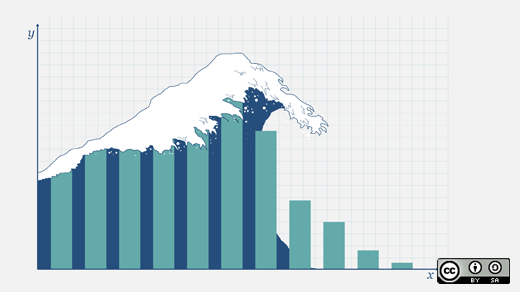Businesses with more than a handful of employees have a lot to balance including pricing, product planning, accounting and finance, managing payroll, dealing with inventory, and more. Stitching together a set of disparate tools to handle those jobs is a quick, cheap, and dirty way to get things done.
That approach isn’t scalable. It’s difficult to efficiently move data between the various pieces of such an ad-hoc system. As well, it can be difficult to maintain.
Instead, turn to an Enterprise Resource Planning (ERP) system.
The big guns in that space are Oracle, SAP, and Microsoft Dynamics. Their offerings are comprehensive, but also expensive. What happens if your business can’t afford one of those big implementations or if your needs are simple? You turn to the open source alternatives.
There are a number of flexible, feature-rich, and cost effective open source ERP systems out there. Here is a look at four of them.
What to look for in an ERP system
Obviously, you will want a system that suits your needs. Depending on those needs,more features doesn’t always mean better. However, you needs might change as your business grows so you’ll want to find an ERP system that can expand to meet your new needs. That could mean the system has additional modules, or just supports plugins and add-ons.
Most open source ERP systems are web applications. You can dowload and install them on your server. But if you don’t want to, or don’t have the skills or staff to, maintain a system yourself then make sure there’s a hosted version of the application available.
Finally, you’ll want to make sure that the application has good documentation and good support—either in the form of paid support or an active user community.
Odoo
Odoo is an integrated suite of applications that includes modules for project management, billing, accounting, inventory management, manufacturing, and purchasing. Those modules can communicate with each other to efficiently and seamlessly exchange information.
While ERP can be complex, Odoo makes it friendlier with a simple, almost spartan interface. The interface is reminiscent of Google Drive, with just the functions you need visible.
Odoo is a web-based tool. Subscriptions to individual modules will set you back $20 (USD) a month for each one. You can also download it or grab the source code from GitHub.
You can give Odoo a try before you decide to sign up.
ERPNext
ERPNext was featured on Opensource.com last November, and it’s one of those classic open source projects. It was designed to scratch a particular itch, in this case replacing a creaky and expensive proprietary ERP implementation.
ERPNext was built for small and medium-sized businesses. It includes modules for accounting, managing inventory, sales, purchase, and project management. The applications that make up ERPNext are form-driven—you fill information in a set of fields and let the application do the rest. The whole suite is easy to use.
If you’re interested, you can test drive ERPNext before taking the plunge and downloading it or buying a subscription to the hosted service.
Dolibarr
Like ERPNext, Dolibarr is aimed at small and medium-sized businesses. It offers end-to-end management of your business from keeping track of invoices, contracts, inventory, orders, and payments to managing documents and supporting electronic point-of-sale system. It’s all wrapped in fairly clean interface.
If you’re wondering what Dolibarr can’t do, here’s some documentation about that.
In addition to an online demo, Dolibarr also has an add-ons store from which you can buy software that extends Dolibarr’s features.
Opentaps
Unlike the other ERP systems that this article discusses, Opentaps is designed for larger businesses. To that end, it packs a lot of power and flexibility.
You get the expected set of modules that help you manage inventory, manufacturing, financials, and purchasing. You also get an analytics feature that helps you analyze all aspects of your business. You can use that information to better plan into the future. Opentaps also packs a powerful reporting function.
On top of that, you can buy add-ons and additional modules to enhance Opentaps’ capabilities. There are only a handful available right now, but they include integration with Amazon Marketplace Services and FedEx.
Before you download Opentaps, give the online demo a try.
Thanks to Opensource.com moderator Scott Nesbitt for this article.




Comments are closed.